#North west pictures.
Text
🌠
#a moment i need to capture while it's still fresh#stargazing alone in the chill and damp of an august night#the crickets singing all around#northern lights filling the sky like nothing i've ever seen#the red colors even visible to the naked eye#pictures show the entire sky alight with red and green and blue#but they can't capture the delicate blue-white formations that i see with the naked eye#or the pulsing weaving swirling motion of the lights above#the high point of the night is looking straight up into the night sky#not north or south or east or west just up which is out toward space#not a direction tied to our world but out to god#and there were these constant swirling waves of light all pulsing toward the very center of the sky#and then a shooting star#the brightest and clearest of the night#streaks upward across the right-hand side#and after an evening of wanting to feel closer to god than i do when surrounded by his heavenly marvels#the prayer that comes to mind is 'glory'#glory to the father and to the son and to the holy spirit who created all this and let me see it#and there is no one to share it with#no way to capture what i'm seeing#no way to share this moment with anyone else#there is no one i'll be able to turn to and say#remember when we saw that shooting star in the middle of the northern lights?#this moment can't be captured or repeated it simply exists in this moment right now#it's beautiful and sad#and also a gift#i meant to stay out for maybe fifteen minutes#i was out there an hour and wish i didn't have to leave#and there was no way to share it but i had to try to share it with someone before i lost the moment
44 notes
·
View notes
Text

Kneecap (dir. Rich Peppiatt).
[The] controversial West Belfast hip-hop trio, [...] known for rapping republican lyrics in their native Irish language, star in their own titular biographical film about their rise to fame and infamy. Set in 2019, [...] Peppiatt directs the plainly titled Kneecap with an energetic, riotous verve to its provocative, explicitly anti-UK material of rebellion.
#kneecap#kneecap movie#michael fassbender#movie review#movies#movie#film review#film#sony pictures classics#belfast#west belfast#indie film#indie movie#cinema#irish film#rich peppiatt#northern ireland#north of ireland#irish language#jessica reynolds#mo chara#móglaí bap#moglai bap#dj próvaí#dj provai#liam og o hannaidh#naoise o caireallain#jj o dochartaigh#rap#bfi
20 notes
·
View notes
Text
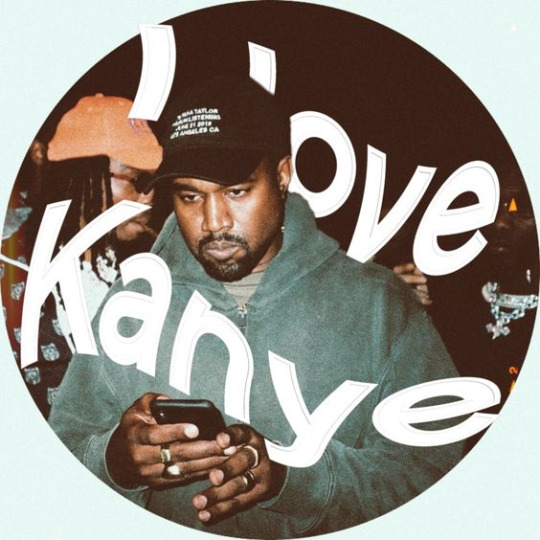

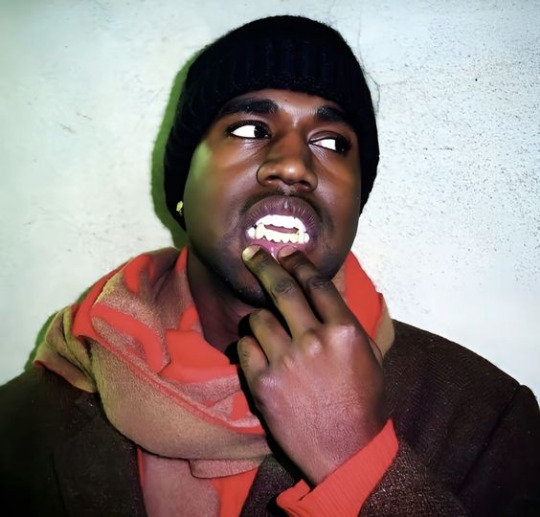

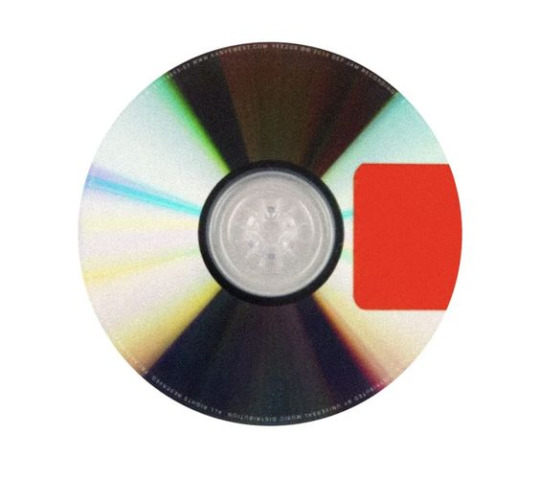
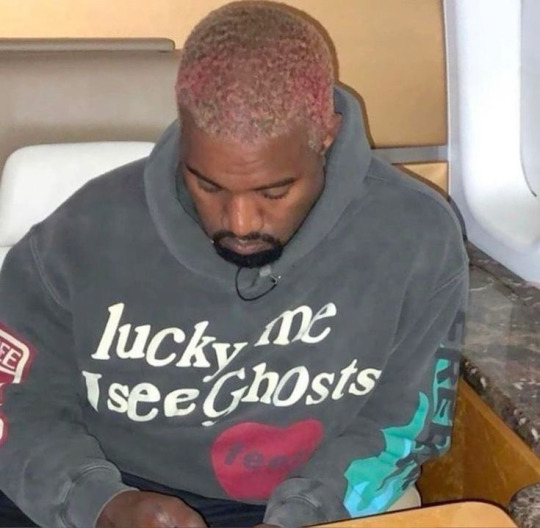
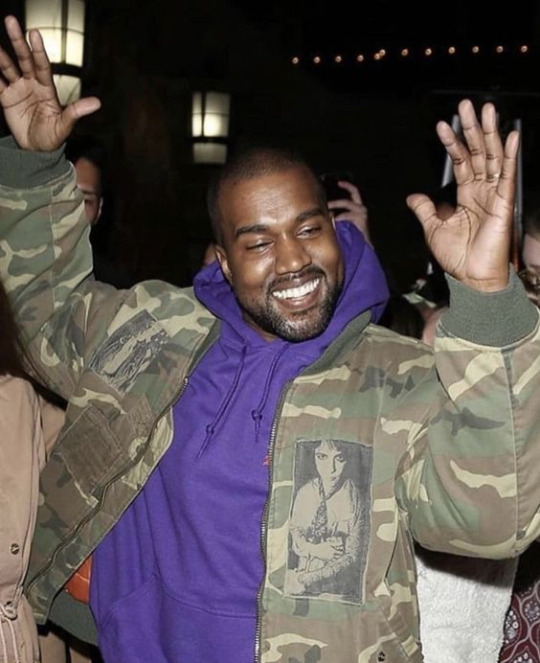
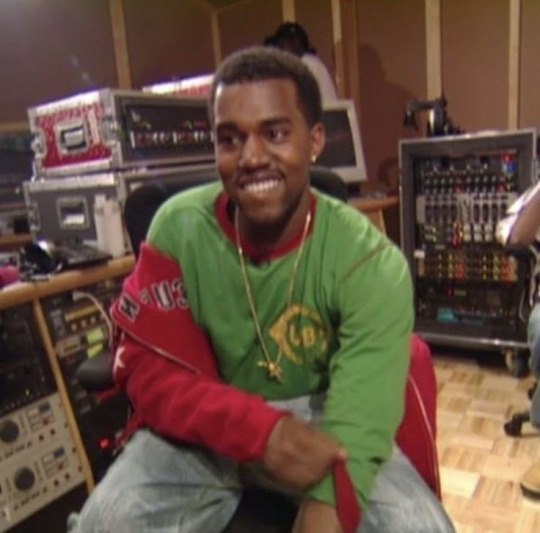
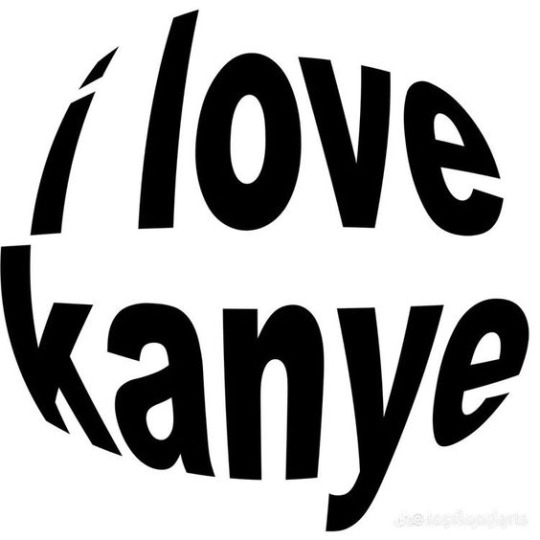
#xiaoswrld ᶻ 𝘇 𐰁#icons#kanye west#kanye icons#celebrity pfps#profile pictures#pfp#rb#rap#alternative moodboard#kanye yeezy#music news#north west#north#red#messy#messy random#messy random moodboard#messy red#celebrity moodboard
49 notes
·
View notes
Text

this what my mf tabs look like every time i write an ATPOH chapter 😭
#not pictured are also a washington post article and a map of north carolina#west wing heads get ready 4 an update after 17 insane months#am i procrastinating a real life project im working on? u bet!
4 notes
·
View notes
Text

Koko 💙
#khloe kardashian#kim kardashian#kylie jenner#tristan thompson#true thompson#kourtney kardashian#body goals#bodypositivity#amazing body#beautiful#gorgeous#like4like#follow#kanye west#north west#kardashian world#25000 likes#pretty girls#kendall jenner#tumblr pictures#fashion#style
17 notes
·
View notes
Text
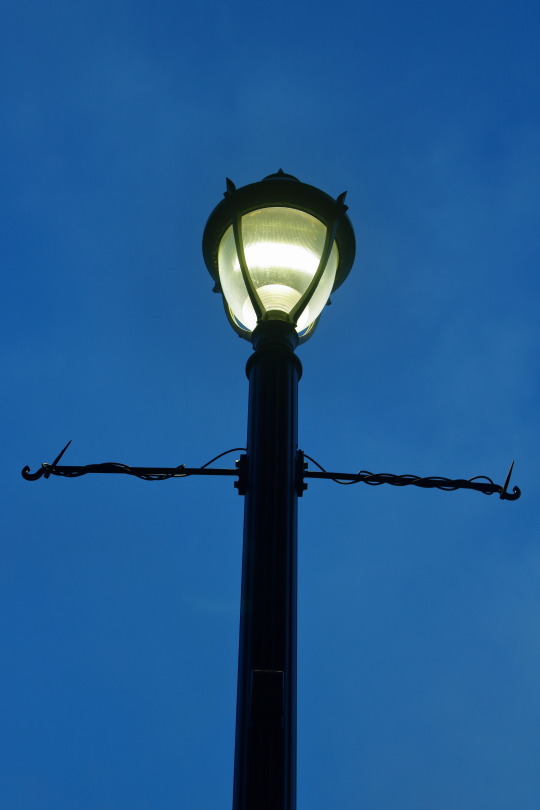
© inlandminimal
#minimalism#inland north west#inland nw#sky pictures#original photographic works#original photography on tumblr#artists on tumblr#photographers on tumblr#photography
7 notes
·
View notes
Text

I'm crying. on the Mars google maps you can still find the MRO's pic of Opportunity by Victoria Crater. I'm fucking crying

#I'm just trying to find new places to play at in Surviving Mars. I've played Gale Crater about a million times#I should know by now that if I do ANY research on ANY space shit I'm gonna end up sitting there for like 5 hours just staring at pictures#I've banned myself from looking at Laika's wikipedia page#might have to do the same for Oppy's#btw I've also found her resting place by Endeavour Crater. which I'm gonna be playing#for reference: this is in the Meridiani Planum. slightly North-West of Sinus Meridiani#zoom in on Meridiani Planum & then go South West. you'll see Endeavour. Victoria is North West of that & Eagle Crater is further up#Oppy is currently on the left side of Endeavour on the ridge just above where it seems to cut in half
5 notes
·
View notes
Text
Okay it was the North West 200 yesterday and Glenn Irwin (the superbike class winner) just posted that someone stole the £200 gift card he won as a prize 💀
#they didnt steal the physical card but they could see the code on it in pictures so they redeemed it#and the nw200 staff should have prevented that#but also the nw200 is a road race and it's dangerous it's like the tt and you're just going to steal the prize money ???#north west 200#british superbikes
1 note
·
View note
Text
Not adding this onto the post i just reblogged because its unrelated but zi keep thinking about it lately and it pissed me off. I think one of the worst things about being Canadian is that you 100% get forgotten when people are discussing the 'main western countries of the world' (US, Australia, Europe) like the amount of times I go to look at articles that give prices for something is USD EUROS and AUSD but not a fucking mention of CAD? People label concerts as north american tours but then go to like two Canadian cities, and only ever go to the five big ones, Vancouver, Toronto, Montreal, Ottowa, Winnipeg. If I'm lucky they come to Edmonton or Calgary but that is only ever if they actually go to more than 1 or 2 Canadian cities. I can't even imagine how much worse it is being in places like NWT or Saskatchewan or Newfoundland. And then because they went on a 'north american tour' if they do a worldwide tour they don't go to Canada AT ALL. It's fucking infuriating. Unless you get a VPN streaming services are wastes of money here, and half of the main ones don't even have the option to make an account in Canada. You can't put in billing info for a Canadian location so you can't VPN them either. And yes I can pirate movies and TV shows and stuff, but sometimes when I love a show I actually want to try and give the creators some money while it's still available. It's just so fucking infuriating that Canada is flat out forgotten so fucking often. I occasionally go to some websites to get info on future lego sets, and it is fucking infuriating to see them list USD, EURO AUSD, JPY but not even MENTION the fact that it's being sold in Canada. Because that's the thing, not only is it hard to find info from Canadian sources on stuff like this, it's hard to even find sources verifying that it's something AVAILABLE in Canada.
Did you know that dino nuggets disappeared in Canada when I was about 10? Just gone. Every single grocery store I go to now I look for them, because they were a comfort food. Even though I KNOW I WILL NEVER SEE THEM. Because there was no info online, so I actyally reached out to a brand asking them to start selling it in my local store. And they responded that they don't sell it in Canada.
Canada is very similar to the US in a lot of ways, but it's fucking annoying to be praised as being 'nicer than americans' or 'the nicest country on earth' or whatever the hell else when we are just as fucked up if not moreso. Then have people turn around and assume we are so similar to Americans that there is no reason to assume we lack access to anything Americans have.
#idk i know this is very first world problem but it pisses me off man#like canada is fucking 13 countries in a trenchcoat and yet people only ever picture Ottawa or BC or Quebec#fuck even as a Canadian I had to google how many provinces/territories we had because they just arent talked about#you ask a nonCanadian to list the Canadian provinces and youll be lucky if they say Alberta#if they sat Yukon or Nunavut or PEI then they have actively fucking learned about Canada at some point#you ask a non American to list states and they could probably list at least one state from the different geographical regions#like california or florida or new york or texas or oregon or idaho or kentucky or north dakota or west virginia#i would be genuinely shocked if a noncanadian was able to name Yukon or Nunavut without having to think on it for a bit#idk#sorry for so many rant posts lately#just been feeling angry#vent post
1 note
·
View note
Text

good morning lovelies
#this picture is sunset tho lol#west coast florida#gulf coast#sunset#beach#Florida#NWFL#north Florida
0 notes
Text
What does life in North Korea look like outside of Pyongyang? 🇰🇵
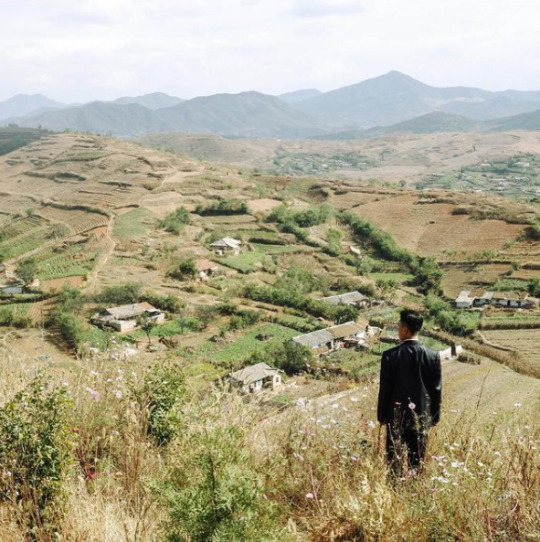
Hey, I'm back again with a very scary "tankie" post that asks you to think of North Koreans as people, and to consider their country not as a cartoonish dystopia, but as a nation that, like any other place on earth, has culture, traditions, and history.
Below is a collection of pictures from various cities and places in North Korea, along with a brief dive into some of the historical events that informs life in the so-called "hermit kingdom."
Warning: very long post
Kaesong, the historic city
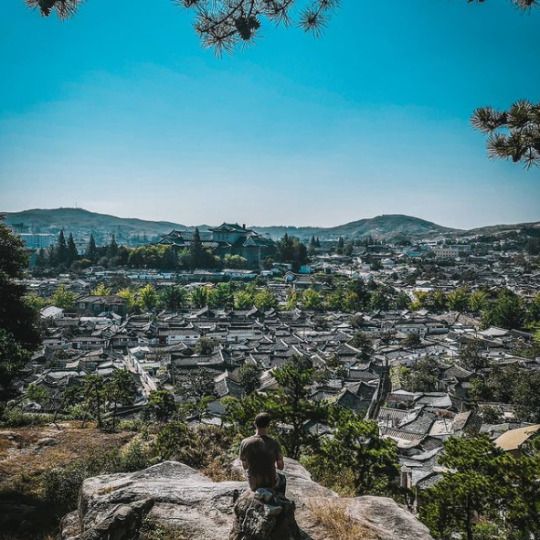
Beginning this post with Kaesong, one of the oldest cities in Korea. It's also one of the few major cities in the DPRK (i.e. "North Korea") that was not completely destroyed during the Korean war.
Every single city you'll see from this point on were victims of intense aerial bombardments from the U.S. and its allies, and had to be either partially or completely rebuilt after the war.
From 1951 to 1953, during what has now become known as the "forgotten war" in the West, the U.S. dropped 635,000 tons of bombs over Korea — most of it in the North, and on civilian population centers. An additional 32,000 tons of napalm was also deployed, engulfing whole cities in fire and inflicting people with horrific burns:
For such a simple thing to make, napalm had horrific human consequences. A bit of liquid fire, a sort of jellied gasoline, napalm clung to human skin on contact and melted off the flesh. Witnesses to napalm's impact described eyelids so burned they could not be shut and flesh that looked like "swollen, raw meat." - PBS
Ever wondered why North Koreans seem to hate the U.S so much? Well...
Keep in mind that only a few years prior to this, the U.S. had, as the first and only country in the world, used the atomic bomb as a weapon of war. Consider, too, the proximity between Japan and Korea — both geographically and as an "Other" in the Western imagination.
As the war dragged on, and it became clear the U.S. and its allies would not "win" in any conventional sense, the fear that the U.S. would resort to nuclear weapons again loomed large, adding another frightening dimension to the war that can probably go a long way in explaining the DPRK's later obsession with acquiring their own nuclear bomb.
But even without the use of nuclear weapons, the indiscriminate attack on civilians, particularly from U.S. saturation bombings, was still horrific:
"The number of Korean dead, injured or missing by war’s end approached three million, ten percent of the overall population. The majority of those killed were in the North, which had half of the population of the South; although the DPRK does not have official figures, possibly twelve to fifteen percent of the population was killed in the war, a figure close to or surpassing the proportion of Soviet citizens killed in World War II" - Charles K. Armstrong
On top of the loss of life, there's also the material damage. By the end of the war, the U.S. Air Force had, by its own estimations, destroyed somewhere around 85% of all buildings in the DPRK, leaving most cities in complete ruin. There are even stories of U.S. bombers dropping their loads into the ocean because they couldn't find any visible targets to bomb.
What you'll see below of Kaesong, then, provides both a rare glimpse of what life in North Korea looked like before the war, and a reminder of what was destroyed.

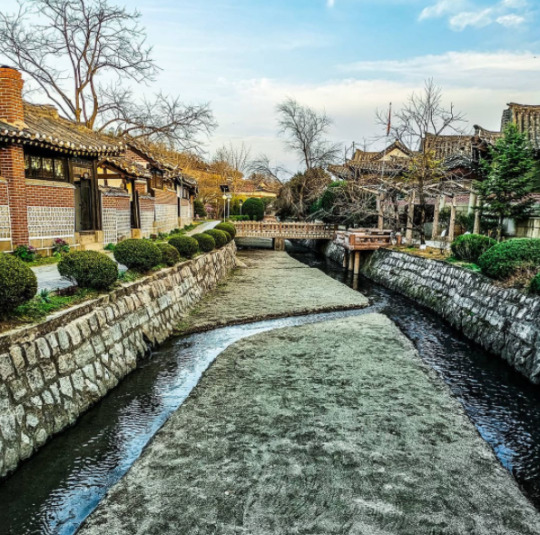

Kaesong's main street, pictured below.
Due the stifling sanctions imposed on the DPRK—which has, in various forms and intensities, been in effect since the 1950s—car ownership is still low throughout the country, with most people getting around either by walking or biking, or by bus or train for longer distances.
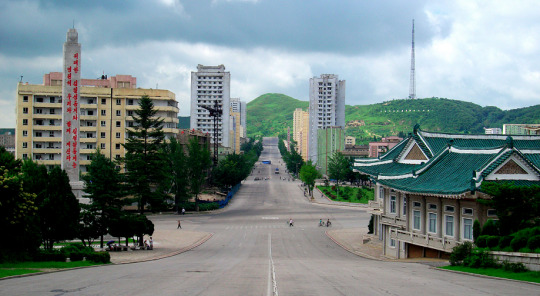
Kaesong, which is regarded as an educational center, is also notable for its many Koryŏ-era monuments. A group of twelve such sites were granted UNESCO world heritage status in 2013.
Included is the Hyonjongnung Royal Tomb, a 14th-century mausoleum located just outside the city of Kaesong.
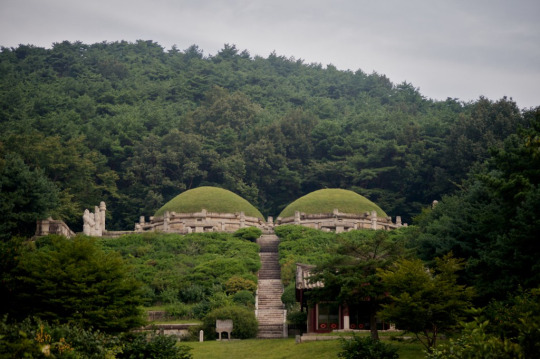
One of the statues guarding the tomb.
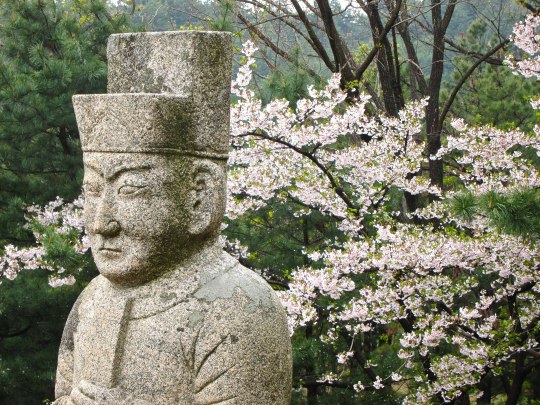
Before moving on the other cities, I also wanted to showcase one more of the DPRK's historical sites: Pohyonsa, a thousand-year-old Buddhist temple complex located in the Myohyang Mountains.

Like many of DPRK's historic sites, the temple complex suffered extensive damage during the Korean war, with the U.S. led bombings destroying over half of its 24 pre-war buildings.
The complex has since been restored and is in use today both as a residence for Buddhist monks, and as a historic site open to visitors.


Hamhung, the second largest city in the DPRK.
A coastal city located in the South Hamgyŏng Province. It has long served as a major industrial hub in the DPRK, and has one of the largest and busiest ports in the country.
Hamhung, like most of the coastal cities in the DPRK, was hit particularly hard during the war. Through relentless aerial bombardments, the US and its allies destroyed somewhere around 80-90% percent of all buildings, roads, and other infrastructure in the city.
Now, more than seventy years later, unexploded bombs, mortars and pieces of live ammunition are still being unearthed by the thousands in the area. As recently as 2016, one of North Korea's bomb squads—there's one in every province, faced with the same cleanup task—retrieved 370 unexploded mortar rounds... from an elementary school playground.
Experts in the DPRK estimate it will probably take over a hundred years to clean up all the unexploded ordnance—and that's just in and around Hamhung.
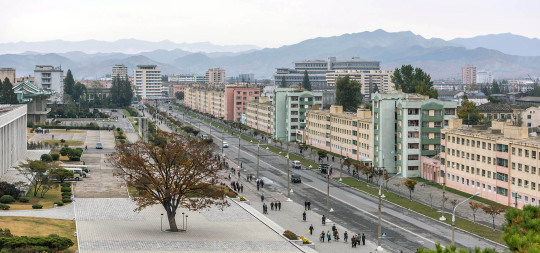

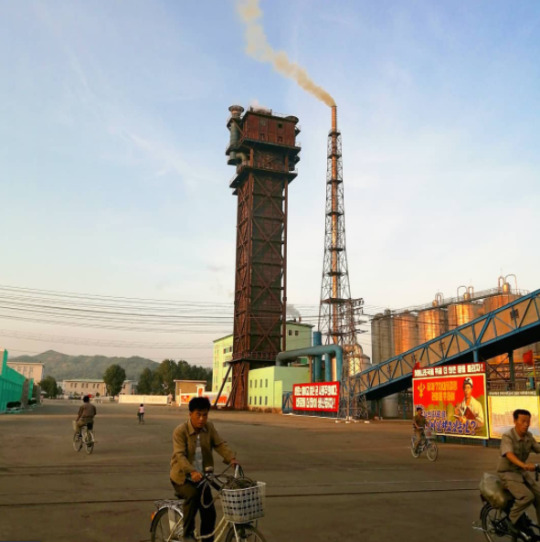
Hamhung's fertilizer plant, the biggest in North Korea.
When the war broke out, Hamhung was home to the largest nitrogen fertilizer plant in Asia. Since its product could be used in the creation of explosives, the existence of the plant is considered to have made Hamhung a target for U.S. aggression (though it's worth repeating that the U.S. carried out saturation bombings of most population centers in the country, irrespective of any so-called 'military value').
The plant was immediately rebuilt after the war, and—beyond its practical use—serves now as a monument of resistance to U.S. imperialism, and as a functional and symbolic site of self-reliance.
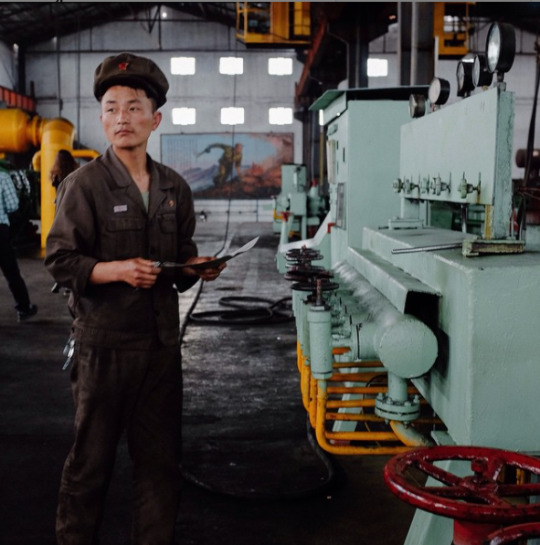
Chongjin, the third largest city in the DPRK.
Another coastal city and industrial hub. It underwent a massive development prior to the Korean war, housing around 300,000 people by the time the war broke out.
By 1953, the U.S. had destroyed most of Chongjin's industry, bombed its harbors, and killed one third of the population.
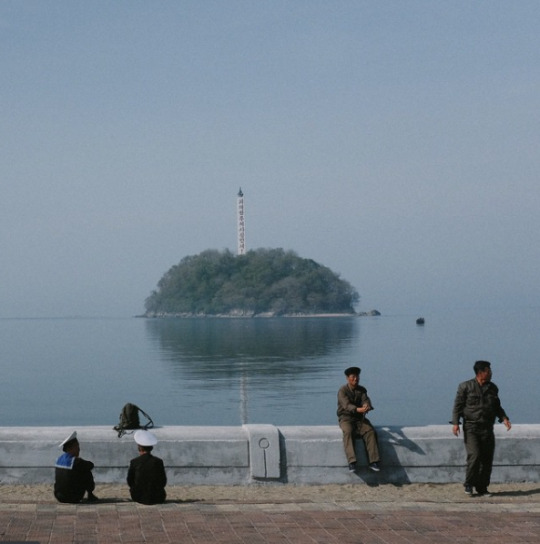
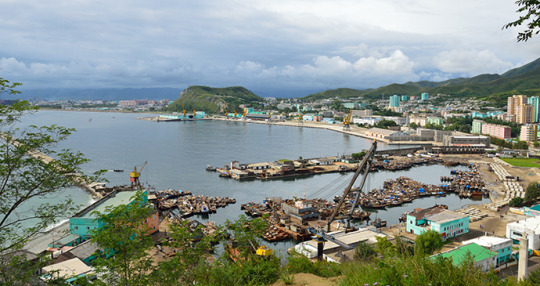

Wonsan, a rebuilt seaside city.
The city of Wonsan is a vital link between the DPRK's east and west coasts, and acts today as both a popular holiday destination for North Koreans, and as a central location for the country's growing tourism industry.
Considered a strategically important location during the war, Wonsan is notable for having endured one of the longest naval blockades in modern history, lasting a total of 861 days.
By the end of the war, the U.S. estimated that they had destroyed around 80% of the city.
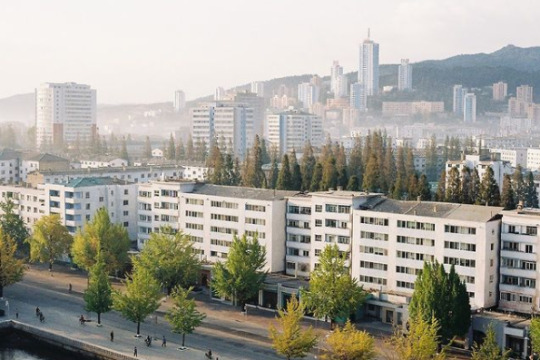

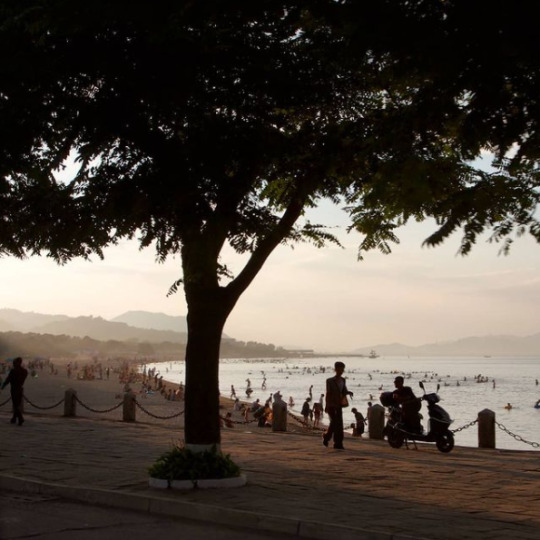

Masikryong Ski Resort, located close to Wonsan. It opened to the public in 2014 and is the first, I believe, that was built with foreign tourists in mind.
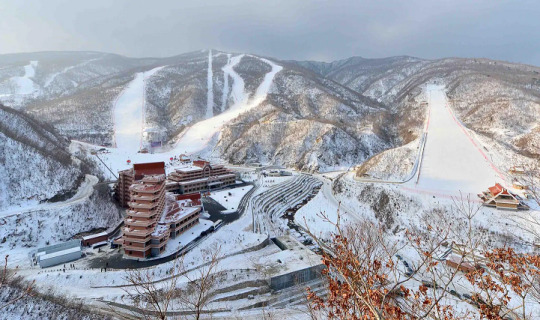
Sariwon, another rebuilt city
One of the worst hit cities during the Korean War, with an estimated destruction level of 95%.
I've written about its Wikipedia page here before, which used to mockingly describe its 'folk customs street'—a project built to preserve old Korean traditions and customs—as an "inaccurate romanticized recreation of an ancient Korean street."
No mention, of course, of the destruction caused by the US-led aerial bombings, or any historical context at all that could possibly even hint at why the preservation of old traditions might be particularly important for the city.
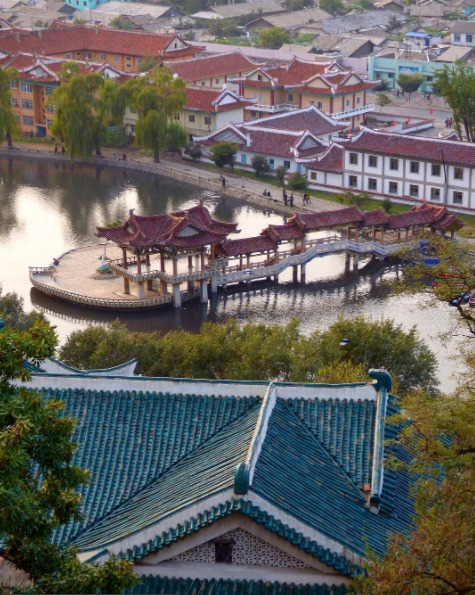

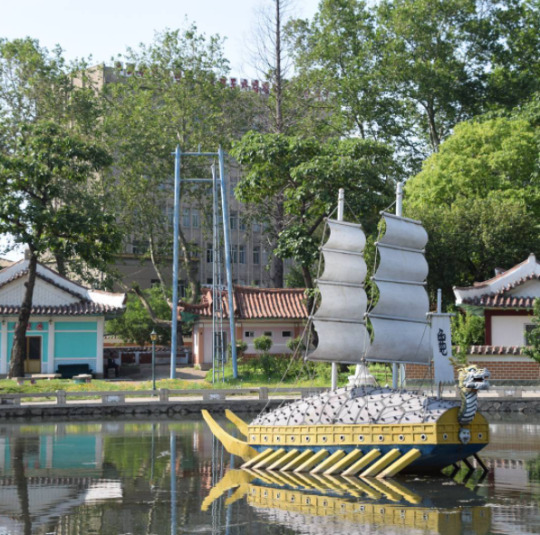
Life outside of the towns and cities
In the rural parts of the DPRK, life primarily revolves around agriculture. As the sanctions they're under make it difficult to acquire fuel, farming in the DPRK relies heavily on manual labour, which again, to avoid food shortages, requires that a large portion of the labour force resides in the countryside.
Unlike what many may think, the reliance on manual labour in farming is a relatively "new" development. Up until the crisis of the 1990s, the DPRK was a highly industrialized nation, with a modernized agricultural system and a high urbanization rate. But, as the access to cheap fuel from the USSR and China disappeared, and the sanctions placed upon them by Western nations heavily restricted their ability to import fuel from other sources, having a fuel-dependent agricultural industry became a recipe for disaster, and required an immediate and brutal restructuring.
For a more detailed breakdown of what lead to the crisis in the 90s, and how it reshaped the DPRKs approach to agriculture, check out this article by Zhun Xu.

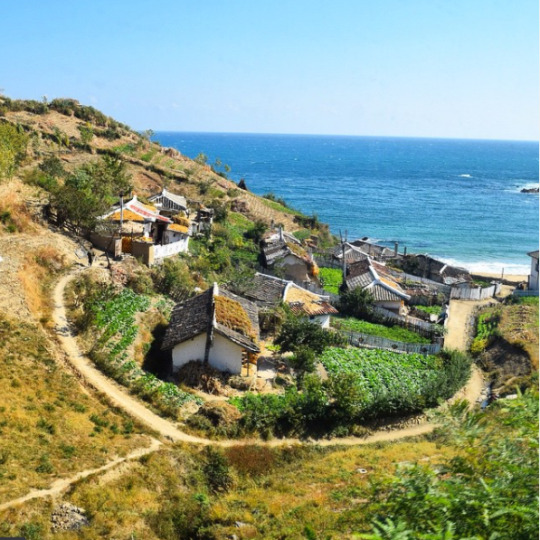
Some typical newly built rural housing, surrounded by farmland.
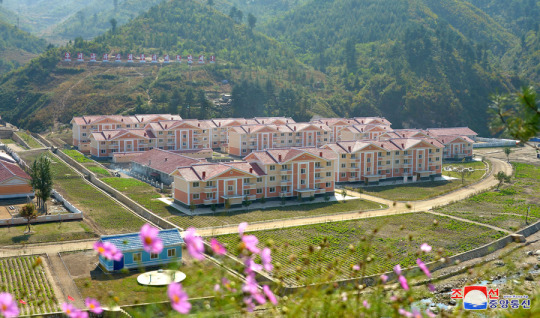
Tumblr only allows 20 pictures per post, but if you want to see more pictures of life outside Pyongyang, check out this imgur album.
#dprk#north korea#i've had this post unfinished in drafts for almost a year#also sorry about the spelling and potential formatting issues it's a nightmare to edit at this point#it was literally just meant to be a collection of picture and then the writing just sort of happened#enjoy the brief heritageposts history lesson i guess
6K notes
·
View notes
Text
¿Cuándo se estrena 'PAW Patrol: La Súper Película' en México y LATAM?
🍿La increíble y nueva aventura de PAW Patrol, ya tiene fecha de estreno en los cines de México, LATAM, Estados Unidos y Canadá. 🐾
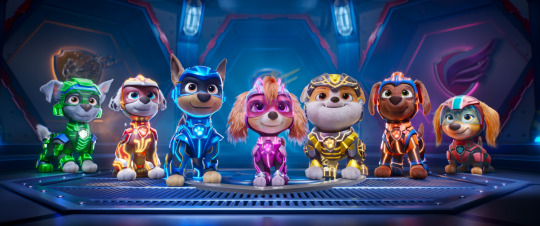
View On WordPress
#Alan Kim#Brice Gonzalez#Callum Shoniker#Chris Rock#Christian Convery#Christian Corrao#con James Marsden#Finn Lee-Epp#Kim Kardashian#Kristen Bell#Lil Rel Howery#Luxton Handspiker#Marsai Martin#Mckenna Grace#North West#Nylan Parthipan#Paramount Pictures#PAW Patrol#Paw Patrol: La Súper Película#Ron Pardo#Saint West#Serena Williams#Taraji P. Henson
1 note
·
View note
Text
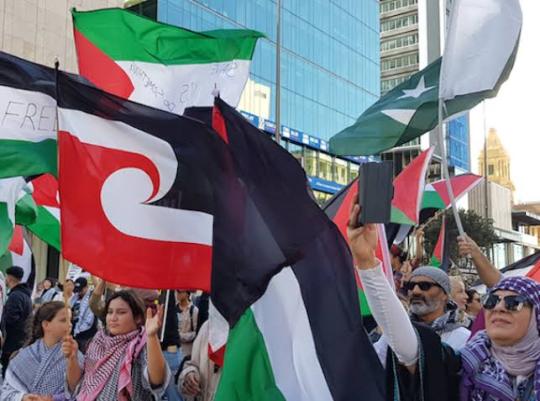
The Māori tino rangatiratanga [sovereignty, self-determination] flag flying alongside Palestinian flags. The tino rangatiratanga flag is black at the top and red at the bottom, the two colours separated by white lines forming a koru (spiral). The Palestinian flag has three horizontal stripes (black, white and green) with a red triangle on the left.
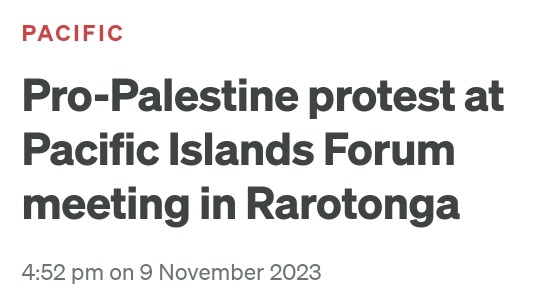
"Pro-Palestine protest at Pacific Islands Forum meeting in Rarotonga"

A young child holding an ili (Samoan woven fan) that says Samoa for Palestine

A young boy holds a sign reading Justice the seed, peace the flower / Ko te mana whakaaiko hei kākano, kia puawai mai te maungarongo. Beneath is artwork of a fist breaking free from chains below blooming flowers.

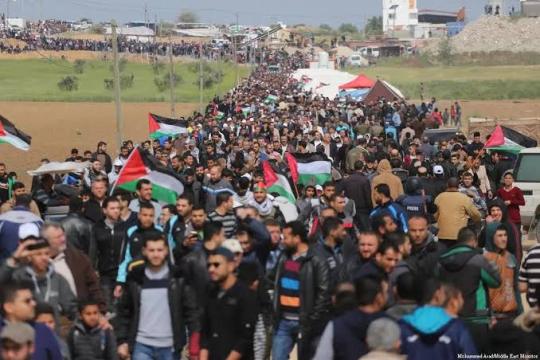
Left: the 1975 Māori Land March. Right: the 2018-2019 Palestinian Great March of Return.
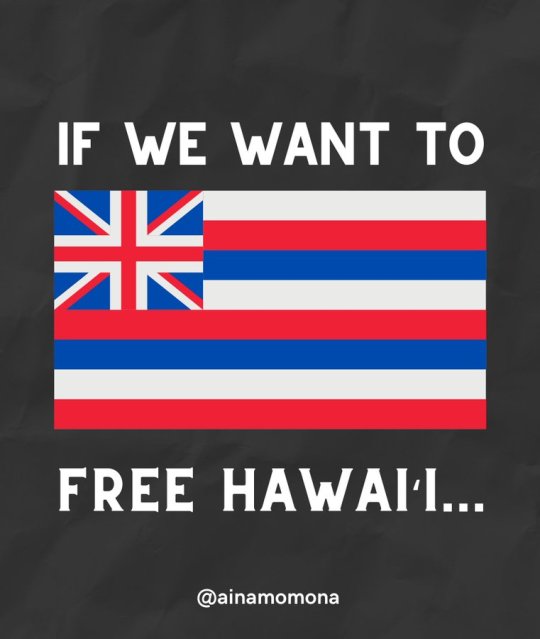

If we want to free Hawai'i... [Hawaiian flag] we must also free Palestine [Palestinian flag]. Credit to @ainamomona

A young Māori boy holding a sign that reads MANA MOTUHAKE [independence/autonomy] 4 PALESTINE

A Fijian woman holding a sign that reads Food is not a weapon of war! Stop starving Palestinians! Behind are two more signs. One says CEASEFIRE NOW and the other says DON'T STOP TALKING ABOUT GAZA
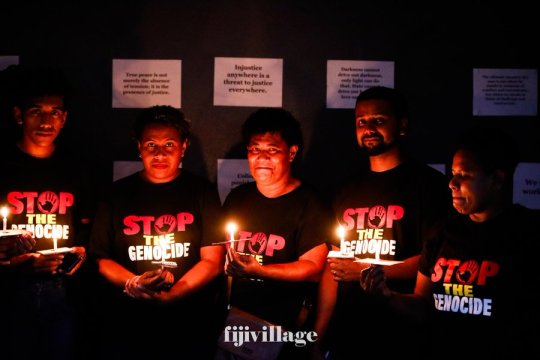
A group of Fijians holding candles and wearing shirts that read STOP THE GENOCIDE
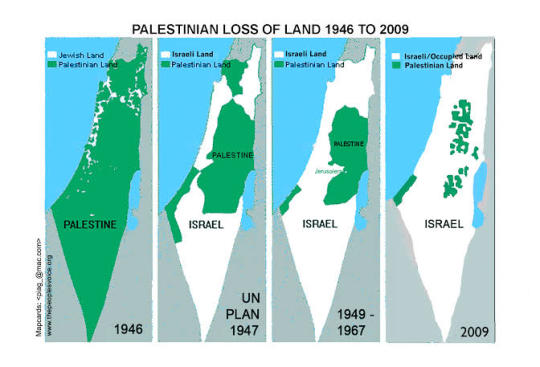
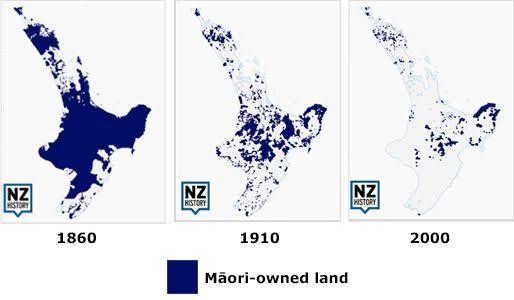
Left: a diagram of Palestinian land loss between 1946 and 2009. Right: a diagram of Māori land loss in the North Island of Aotearoa between 1860 and 2000.

A sign reading TANGATA WHENUA [indigenous people] FOR PALESTINE [tino rangatiratanga symbol, Palestine flag symbol]

Three Pasifika people holding signs. The first says MAI LE VAITAFE AGA'I I LE SAMI! [Samoan: from the river to the sea] FREE PALESTINE! The second sign says FROM OUR PASIFIKA OCEAN TO THE RIVER TO THE SEA FREE PALESTINE. The final sign shows the Palestinian and Tongan flags and says 'OFA KI PALESITAINE [Tongan: Love to Palestine]

A group of Pasifika holding signs and banners. They say "HOW MANY MORE KILLINGS IS ENOUGH FOR YOU?" "KŪ'E! KŪ'E! [Hawaiian: Resist! Resist!] PASIFIKA STANDS WITH PALESTINE" "'OFA KI PALESTINE" "FROM THE PACIFIC TO THE RIVER TO THE SEA, PALESTINE WILL BE FREE" "WHERE IS YOUR HUMANITY?" "SAMOANS FOR PALESTINE" "FROM THE RIVER TO THE SEA" "KŪ'E KŪ'E KANAKA WITH PALESTINE" "FREE PALESTINE CEASEFIRE NOW"

A West Papuan man holding two signs. The first says WEST PAPUA STAND WITH MYANMAR. The second says WEST PAPUA STAND WITH PALESTINE

Two signs. The first says PACIFIC ISLANDERS FOR PALESTINE. The second says #FREE PALESTINE #FREE WEST PAPUA #FREE CONGO #FREE SUDAN

A Palestinian flag decorated with Samoan patterns. Words say 'AGA'I MAI LE VAITAFE E O'O ATU I LE SAMI FROM THE RIVER TO THE SEA #Sāmoans4Palestine
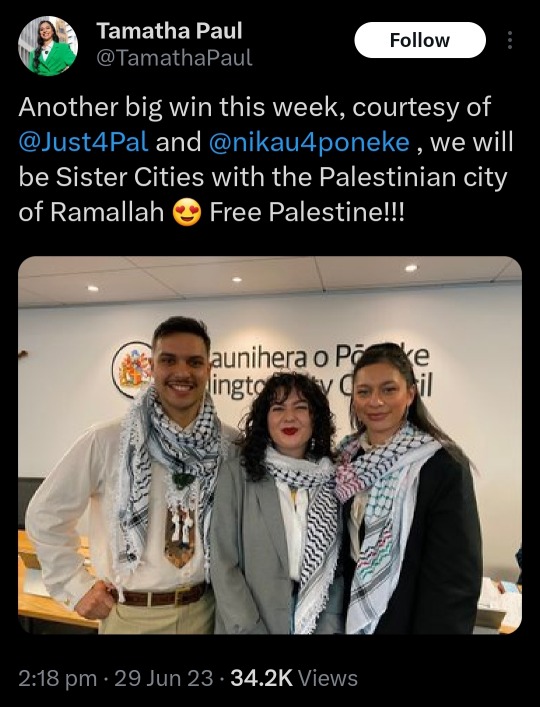
A tweet from Tamatha Paul (Waikato-Tainui, Ngāti Awa) on 29 June 2023. Another big win this week, courtesy of @Just4Pal and @nikau4poneke, we [Pōneke Wellington] will be Sister Cities with the Palestinian city of Ramallah 😍 Free Palestine!!!

A Pasifika woman holding two signs. The first says FREE PALESTINE FREE PALESTINE END THE APARTHEID! END THE BLOCKADE! END THE ETHNIC CLEANSING! CEASE STATE SANCTIONED VIOLENCE! CEASE COLONIALISM! BOYCOTT ISRAEL! From the river to the sea, Palestine will be free! The second sign has pictures of Palestinian and West Papuan flags. It says pacific islanders stand in solidarity with Palestine! #FREEWESTPAPUA #FREEPALESTINE CEASE COLONIALISM

A sign that has the tino rangatiratanga flag at the top and Palestinian flag at the bottom. It says Mai te awa ki te moana [from the river to the sea] MĀORI LAW STUDENTS For a FREE PALESTINE
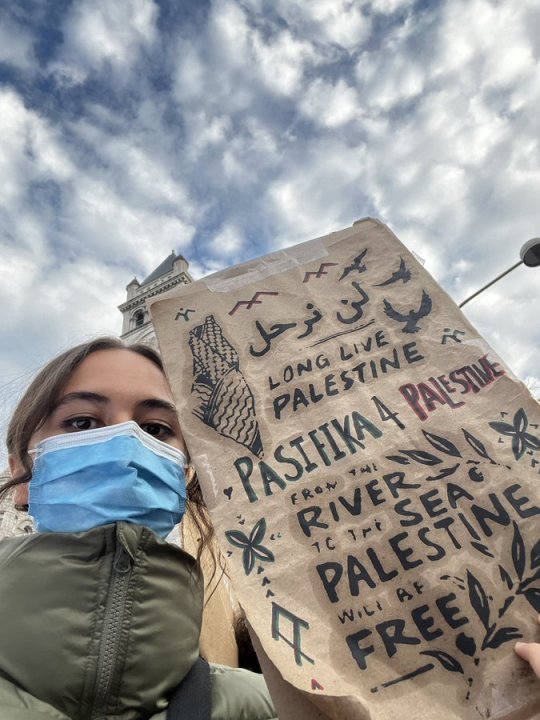
A Pasifika woman holding a sign decorated with Pacific symbols. It says LONG LIVE PALESTINE - PASIFIKA 4 PALESTINE - FROM THE RIVER TO THE SEA PALESTINE WILL BE FREE

Another Samoan fan. This one says PALESTINE WILL BE FREE
6K notes
·
View notes
Text
“Across cultures, darker people suffer most. Why?” Multiethnic and Multicultural Blackness
“Across cultures, darker people suffer most. Why?”- Andre 3000
Tell me what's wrong with this picture.

Hint: This is Miles Morales- from the video game depiction- canonically an Afro-Puerto Rican. Jefferson is Black American; Rio is Puerto Rican.
So why is the Cuban flag on their wall?
This is what happens when no one (with any saying power) in the board room is representative of the group being depicted! And mind you, this was produced under SONY and MARVEL, for the PS5, a product under two brands that combined churn out hundreds of millions in profit! And… No one on any level corrected them until the beta came out and fans saw it. That's how pervasive this sort of ignorance of other cultures can be. How are you writing a story about a character, and you don't even know how he identifies?
Multiethnic & Multicultural Blackness
Realistically, you’ve probably walked past many a biracial, multicultural, or multiethnic Black person before and assumed they were “just Black”. One example: Rae Dawn Chong- known as Mama du Pointe du Lac- is Afro-Chinese, but that Chinese background did not play into the role she played. A more personal example: my recent loctician was also Afro-Chinese, with very dark skin (she made jokes about how her eyes reveal it, but we can’t make those jokes here). I would have never known.
Point is, we reacted to what we saw, and that’s not an accident. Blackness is treated as a monolith, and an indicator of social level whether you realize it or not. You see a ‘Black’ person, and without wondering any further about their identity, you will treat them as you’ve been socialized to treat ‘Black’ people! But every Black person is not the same!
You don't have to write an entire essay with citations mid-story about how you learned so much about the Afro-Chicana or Afro-Iraqi experience for your main character. We didn't ask. But, slipping natural things here and there into the story of a character’s culture helps cement that yes, this character has this multicultural identity and it matters to them; it is who they are, it has an effect on their life and character in some way. It is how you deepen the character and show respect for the culture you are depicting!
I love using Miles as an example, so here’s a good example. In Across The Spiderverse, he goes to a party to celebrate Jefferson’s new position. In that scene, Rio walks through a mix of all his family members. Even when he speaks with his parents in this scene, they managed to incorporate his Afro-Puerto Rican identity without shouting to the rooftops “HEY! HE’S BLACK AND LATINO! SEE HOW I’M TELLING YOU?”
Race vs Ethnicity
The Black experience stretches as far as the African diaspora- worldwide! It's why it's frustrating when people assume "Black people" means "United States" and the West's perception of "Third World Africa" (especially when it comes to existing in media that people have strongly claimed is just White). Latin and Central America? West Europe? East Europe? Southwest Asia and North Africa? The Mediterranean? East Asia? Australia? You will find Black people!! Just because we aren't the majority doesn't mean we aren't there!
But just because we're Black doesn't mean we're all "African-American". Ethnicity is "the quality or fact of belonging to a population group or subgroup made up of people who share a common cultural background or descent." Race is "a categorization of humans based on shared physical or social qualities into groups generally viewed as distinct within a given society."
"But I thought you said Black is an identity!"
It is! Black does not only mean “Black American”. The reason Black Americans identify as just Black (which is why I demand that you show respect by capitalizing it) is due to the loss of our specific heritages from the enslavement meant to scourge us of them, to make us property. To call us by our actual names would be acknowledging our equivalent humanity and culture. In order to enforce slavery without qualm, they had to be violently removed. Black Africans of numerous ethnic groups, now violently forced into this amalgamation, had to come together and forge something new. We had to find a common connection- our Blackness (and that experience as defined by whiteness in this society) was it. It also functions as a reclamation of our identity, of our presence in this world. We are a culture, we are an entire group of people, and we should be acknowledged as such.
youtube
Again: all Black people are NOT the same!!! This is like… anti-racism 101, but so many people continue to fall for it, even those ‘well-meaning’. You cannot ask one Black person to represent the ENTIRETY of the world's Black experience. Many other factors will come into play, and this includes their culture.
Keep in mind how being multicultural and/or biracial and Black will put many people at a crossroads that is complex and difficult to traverse. There will always be parts of incomplete acceptance, an extra layer of code-switching based on where you are and who you're with. A Black Kenyan is not a Black American, who is not a Black Greek, who is not a Black Colombian, who is not a Black Filipino. They're different cultures, that will treat each other differently. Society- from strangers to your own family- may try to pull multiethnic Black people one direction or another- are you ‘Black’ enough, are you ‘technically Black’, are you ‘technically’ something else, are you that ethnicity enough?
(I will discuss Black biracial people with whiteness in the next lesson, because I felt like the interracial and biracial White & Black topic needed its own talk, but this is relevant there as well.)
Where- In the world- Is-
Coming back from the opening of this lesson: keep in mind that you need to know specifically WHERE your character is from! For example, just saying they're "Afro-Latino" reveals very little- there's an entire chunk of the planet that falls under the "Latin America" category (as defined by U.S. standards).
A follower of mine- they identify as Caribbean Latine- sent me this in discussion about the topic:
"I wish people actually thought about where their Afro-Latino characters are from. It’s always very vague and it’s so reductive because an Argentinian Afro-Latino is very different from a Puerto Rican Afro-Latino. This is very subjective but I think this issue is pretty blatant in The Owl House. They flash the Dominican flag a couple of times, but when it comes to actually making her Afro-Latino…I don’t think they did a very good job. They barely made her Black in the first place. I don’t want to dog on the voice actors too much because there are a million factors that might have affected this but. When they make a point to have the characters speak Spanish, it’s really noticeable when the accent/dialect doesn’t align with their ethnicity. Dominicans have a really identifiable dialect in Spanish. When the Afro-Latino characters speak in Spanish, it’s the most neutral accent I’ve ever heard. This is such a me-issue, but this is to say that people should actually research where their characters are from instead of vaguely painting them as Afro-Latino. We are all SOOO different. Our dialects vary so much that sometimes an Afro-Mexican and an Afro-Puerto Rican won’t understand each other even though we speak the same language.”
WHO are we talking about? How does that factor into their identity, and the way the world- both in story, and how readers from around the world- will perceive them? Will an Afro-Dominican know that they're supposed to relate to your character if they're vaguely Latino?
Note:
While I was doing my research, I noticed that searching for “Afro-_” doesn’t always offer much, as it does the ubiquitous antiblack experience and roles in politics and resistance. And while I think that’s super cool and mandatory, I think another way to approach this would be to focus on the culture as a whole, and then go from there. So for example, if I wanted my character to be Afro-Mexican- maybe even from a specific location in Mexico, or their family is from that area- it would be easier to look up the cultures and activities of that area itself, and then inform with my knowledge of how Blackness is treated there.
As I am not a member of these groups, I thought it would be better for me to find resources that better explain, than to try to speak for them myself. Hell, just from doing this research, I learned that I have far more to educate myself on. There are so many good resources out there! People speak on these topics that y’all want to know about, and there are so many books and videos- find them and educate yourselves! This is a long section filled with links, so I'm going to put them under a readmore.
I also could not possibly sit here and name every single ethnic combo because that would be endless. So what I'm going to do is give some broad strokes of a few major groupings, that will hopefully start you on the path of how to conduct your own research!
The African Diaspora
This is such a good resource. There are short chapters going into the details and history of Black people in many regions, all around the globe. I’m honestly in love with how this is set up. It's a good starting point!
Black Africans

This one isn't specifically an example of multiethnicity; I just want to emphasize that there are many ethnicities and cultures within Africa itself! One is still multiethnic if they are Black American and Ivorian, for example! As the birthplace of humanity, there are plenty of ethnic groups in Africa with endlessly rich cultures, and all of them will come with different foods, fashions, languages!
Notable Figures: Nelson Mandela, Tobi Lou, Patrice Lumumba, Tems, Wizkid, Kwame Nkrumah, Chinua Achebe, Chimamanda Ngozi Adichie, Wangarĩ Maathai, Agnes Tirop, Chéri Samba, Sheikh Abdullah Ssekimwanyi
Internalized antiblackness in African countries is due to the long and violent history of western imperialism in Africa. “The Carving Up of Africa” by European nations has long worn on the continent, its resources, and its peoples, and that includes remnants of their beliefs. Another pervasive idea in media is that all African peoples are ‘poor’, ‘living in huts’, and ‘starving’. There are people doing that all over the world, it is not inherent to being Black African. But even if that were the case- and it is not, every African does not live that way- it would still be the fault of aforementioned imperialism. Please do your research, and do not EVER write that if someone is African, they ‘must not be used to food’ or ‘have never seen such magnificent things as [what white character offers]’.
Afro Latinos

Notable figures: Celia Cruz, Frantz Fanon, Zoe Saldaña, Colman Domingo, Lupita Nyongo, Gina Torres, Cardi B, MJ Rodriguez
Notable music styles- Reggaeton? Salsa? Rumba? A lot of the best music of the area has roots in Blackness.
Antiblackness in the Afro-Latino community
Colorism plays a huge role in perception, to the point of putting you into classes of people. From the same Caribbean Latine follower:
Also, they have to do research on racial groupings in LATAM. It’s unavoidable. A Latino that’s considered Black in the USA may not be considered Black in LATAM. This is because of Blanqueamiento. That is a LOT to explain, but TLDR: A big difference between racism in the USA and racism in LATAM is that white people aren’t focused on segregation. It’s racism through imposition. “Blanqueamiento” refers to whitening and it’s the belief that you can cleanse the bloodline by having children with white people. The lineage will get increasingly lighter. That is why whenever a child comes out lighter than their parents, people will praise the parents for “bettering the race” (mejorando la raza). So a light skinned Black person in the USA may have another racial classification in LATAM (prieto, moreno, mulato, etc)."
One example is 'pelo malo' (bad hair)- how afro-textures are deemed unwanted, as a holdover from Spanish colonization and ideas of whiteness being equivalent to purity. Another severe example is of the slur "mayate"- apparently, it means "f*ggot black bug". If you're Black, and someone ever calls you this, know that you are being severely insulted. If you are interested in more Afro-Mexican history, Colonial Blackness by Herman Bennett is a book that follows the stories of enslaved Africans and their descendants in 17th century Mexico, questioning the existing history told that often leaves out their presence.
Afro Indigenous

*Indigenous doesn't just mean "to America", though the links are to the Afro-indigenous experience in the U.S.
Notable Figures: Crispus Attucks, Lucy Parsons, George Henry White, Charlie Patton, Jimi Hendrix, Eartha Kitt, Lena Horne, Ausben Jordan
What’s interesting is that it was much harder for me to find solid evidence of people who are Black Natives, mainly because it seems this history was lost and/or never recorded, or due to Blood Quantum and antiblackness, not acknowledged. That is something worth thinking about, if you are writing an Afro-Native character.
Blood quantum: A system developed by the United States federal government to determine how much “Indian blood” an Indigenous person has and if they are qualified for Tribal enrollment. Blood quantum limits accessibility to citizenship and is designed to decrease enrollment numbers. Today, some tribes still use blood quantum as criteria for Tribal enrollment. As part of their sovereign status, every federally recognized Tribe determines its own criteria for membership and enrollment.
Further reading:
Young, Black Native activists say it's time to appreciate Indigenous diversity
Black Indians: A Hidden Heritage
Blood Politics: Race, Culture, and Identity in the Cherokee Nation of Oklahoma By Circe Sturm (2002)
We Refuse to Forget: A True Story of Black Creeks, American Identity, and Power By Caleb Gayle (2023)
Afro-Arab/SWANA

Notable figures: Bilal ibn Rabah, Fatima Bernawi, Layla F. Saad, Samirah Srur Fadel, Ahmed Osman, Sara El Hassan (known as bsonblast), Ali Jiddah, Maryam Abu Khaled
Here's an amazing resource cataloguing the history of Afro-Palestinians, as well as a timeline of the solidarity between Black Americans, Afro-Palestinians, and Palestinians!
I sat here and tried very hard to come up with a way to summarize this, especially given current events in our world, and I found that at this moment, I lack the skill to do it. Not because there’s nothing to say- God knows there’s plenty- but unraveling the intersections that comes with the SWANA experience would take me far longer than a summary. I think Maryam Abu Khaled can speak on her experience far better than I, anyway:
youtube
Afro-AAPI

Notable figures: apl.de.ap, Michael Ealy, H.E.R., Karrueche, Rae Dawn Chong, Naomi Campbell, Naomi Osaka, Chanel Iman, Anderson Paak
Interview from famous R&B artist, guitarist, actress for Belle, and Afro-Filipina: H.E.R.
There is a strain between Black and Asian communities, in the United States and beyond, white supremacy playing a major role. But that does not mean that we cannot move forward together, or have not shown one another solidarity.
One of my biggest pet peeves that happens often in fandom spaces is fans who claim that Asians- East Asians in particular, but Asians in general- don't know what Black people are and what we look like. It's racist to every ethnicity and background involved. Yes, there are Black East Asian and Black South Asian people. Yes, these countries have access to the Internet to look up what we look like. There have been plenty of well-drawn Black people by those artists. Just like every white artist isn't going to draw a caricature, every Asian artist isn't going to. It all comes down to practice, their commitment to their craft, and their commitment to not being racist. Being from these areas is not an excuse for not drawing Black people accurately- the same amount of effort they can be put into depicting a white person (that would also be a minority in these places), can be put into depicting us as well. Knock it off.
Conclusion
Antiblackness is unfortunately ubiquitous, yes, but that doesn’t mean the rest of every Black person’s life experience is going to be. We are everywhere on this planet, which means there’s a planet’s worth of experiences to be had. If you decide that you want to create a Black character with a multiethnic or multicultural background, you need to commit to that! Even by mentioning their music, or their food, or- if you’re going to get into it- how others might treat them due to their Afro-identity. Something that lets us as the viewers know that you didn’t just write a white person and then claim they were “Afro-Blank” for clout. If you mean it, do it, because as always, it’s the thought that counts, but the action that delivers!
#there are a lot of links in this one#creatingblackcharacters#multiethnic#multicultural#the black experience#black character design#antiracism#colonialism#representation
1K notes
·
View notes
Text
For years, the people of the Kitasoo/Xai’xais First Nation watched over their waters and waited. They had spent nearly two decades working with Canada’s federal government to negotiate protections for Kitasu Bay, an area off the coast of British Columbia that was vulnerable to overfishing.
But the discussions never seemed to go anywhere. First, they broke down over pushback from the fishing industry, then over a planned oil tanker route directly through Kitasoo/Xai’xais waters.
“We were getting really frustrated with the federal government. They kept jumping onboard and then pulling out,” says Douglas Neasloss, the chief councillor and resource stewardship director of the Kitasoo/Xai’xais First Nation. “Meanwhile, we’d been involved in marine planning for 20 years – and we still had no protected areas.”
Instead, the nation watched as commercial overfishing decimated the fish populations its people had relied on for thousands of years.
Nestled on the west coast of Swindle Island, approximately 500km north of Vancouver, Kitasu Bay is home to a rich array of marine life: urchins and abalone populate the intertidal pools, salmon swim in the streams and halibut take shelter in the deep waters. In March, herring return to spawn in the eelgrass meadows and kelp forests, nourishing humpback whales, eagles, wolves and bears.
“Kitasu Bay is the most important area for the community – that’s where we get all of our food,” Neasloss says. “It’s one of the last areas where you still get a decent spawn of herring.”
So in December 2021, when the Department of Fisheries and Oceans withdrew from discussions once again, the nation decided to act. “My community basically said, ‘We’re tired of waiting. Let’s take it upon ourselves to do something about it,’” Neasloss says.
What they did was unilaterally declare the creation of a new marine protected area (MPA). In June 2022, the nation set aside 33.5 sq km near Laredo Sound as the new Gitdisdzu Lugyeks (Kitasu Bay) MPA – closing the waters of the bay to commercial and sport fishing.
It is a largely unprecedented move. While other marine protected areas in Canada fall under the protection of the federal government through the Oceans Act, Kitasu Bay is the first to be declared under Indigenous law, under the jurisdiction and authority of the Kitasoo/Xai’xais First Nation.

Pictured: "In some ways, I hope someone challenges us" … the Kitasoo/Xai’xais stewardship authority.
Although they did not wait for government approval, the Kitasoo did consult extensively: the declaration was accompanied by a draft management plan, finalised in October after three months of consultation with industry and community stakeholders. But the government did not provide feedback during that period, according to Neasloss, beyond an acknowledgment that it had received the plan...
Approximately 95% of British Columbia is unceded: most First Nations in the province of British Columbia never signed treaties giving up ownership of their lands and waters to the crown. This puts them in a unique position to assert their rights and title, according to Neasloss, who hopes other First Nations will be inspired to take a similarly proactive approach to conservation...
Collaboration remains the goal, and Neasloss points to a landmark agreement between the Haida nation and the government in 1988 to partner in conserving the Gwaii Haanas archipelago, despite both parties asserting their sovereignty over it. A similar deal was made in 2010 for the region’s 3,400 sq km Gwaii Haanas national marine conservation area.
“They found a way to work together, which is pretty exciting,” says Neasloss. “And I think there may be more Indigenous protected areas that are overlaid with something else.”
-via The Guardian, 5/3/23
#indigenous#indigenous issues#indigenous sovereignty#canada#british columbia#land back#first nations#tribal sovereignty#pacific northwest#marine protected area#conservation#sustainability#overfishing#marine science#canadian government#kitasoo-xai'xais#direct action#good news#hope
11K notes
·
View notes
Text
Seeing articles and videos about “Israel” arming settlers reminds me of the stories my great grandpa told me about May 8th 1945. How France armed the settlers so they would help the colonial authorities kill Algerians. 45000 Algerians were killed in just a couple days and many more were jailed without proper trial.
The general who organized the massacre said to France “I got you 10 years of peace. But things need to change in Algeria, they failed only because the protests were not simultaneous. The calm is back only in surface, the gap between the two communities deepened. You cannot keep on using violence if you want to keep Algeria and your methods need to change.”
He was right (still a peace of shit cause dude organized the massacre of 45000 Algerians). France didn’t listen to him and 9 years and a half later on November 1st 1954 the Algerian war of liberation started with simultaneous attacks all over the North of Algeria. It started with 1000 men only and 8 years later Algeria was free of French colonial rule.
That’s why I’m convinced that Palestine will be free because Israel is repeating the same mistakes France did. My grandpa keeps telling me that he trust Palestinians to take back their land because that’s the natural order of things and because “Israel” reminds him so much of France. The methods, the lies, the propaganda. And just like Algerian women managed to show to the world what was truly happening and switched the public opinion, Palestinian journalists are showing to the world what’s happening. It cannot be ignored.
Pro Israel aholes reached the point where they have to disguise their protests as protest against antisemitism in order to gather any form of support from the public. Western medias already lost all credibility to the point where they are backtracking a bit. Politicians are backtracking slowly too. Because they are realizing that if they keep up the unconditional support they will fall with Israel (tbh I think they are all falling with Israel either way because whenever the Global South rise the West fall cause the West is unable to thrive without looting and oppressing the Global South.).
Palestine will be free in our lifetime Inch’Allah and we will all share pictures and videos of the liberation. Palestinians are going to rebuild their country and thrive. If Algeria kicked out colonizers after 132 years Palestine can do it because it’s a country of braves. Because nobody can stop a people who fight for liberation when the people are united.
#from the river to the sea palestine will be free#Palestine#algeria#colonialism#colonial empires arming settlers
3K notes
·
View notes